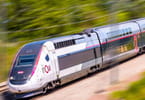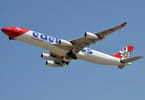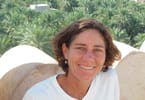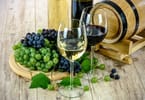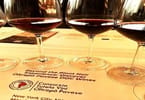The main income for many in Lombok is tourism. Today’s 6.4 earthquakes that rocked the island of Lombok claimed at least ten deaths and 40 injured. 66 aftershocks, some up to 5.7 had been recorded and the potential of a Tsunami is still ongoing until 9.20 GMT July 29. If you are in the area, you should monitor local media, exercise caution and follow the advice of the local authorities.
Lombok is a short ferry trip from Bali, the most known island for international tourists. Bali was not affected by the earthquake, and as of this time, no reports are known of any tourists on Lombok injured. However, the earthquake was felt in Bali. Samantha Cope said from Bali:”So sad for people in Lombok. We were woken by our hotel room shaking in Bali.”
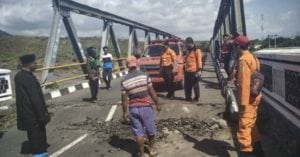
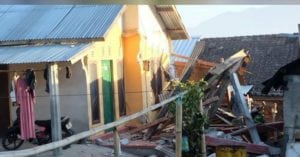
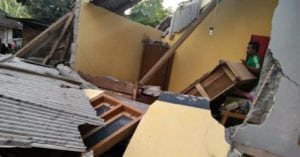
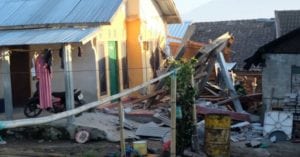
Lombok is a different world compared to Bali. Bali a dominant Hindu region in Indonesia is a very busy island with nightclubs, massive traffic, and large hotel buildings.
The Muslim island of Lombok is very different. Quiet, untouched, small buildings and beautiful resorts tacked in nature. It’s a favorite spot for a quiet holiday.
Foreign tourists in Lombok ran out to the streets after the earthquake to get away from the water due to tsunami threats.
This information is available on www.lombok-tourism.com
Lombok is an island in the West NUsa Tenggara Province (Nusa Tenggara Barat) and its located between Bali and Sumbawa island in the eastern part of Indonesia. Mataram is the administrative capital and its the larger city on the island and has about 2.500.000 in habitants. The Population in Lombok is about 3,5 million, and majority 91% are Moslem. Hindus make up about 6% while Christians and Buddhist about 3%.
Lombok Climate
The climate is perfect with annual temperatures ranging between 21° C – 33° C. it has only two seasons dry and Wet, Dry season from May to October and Wet From November to April.
Lombok Geography
Lombok lies 8 degrees south of the equator and stretches some 80km east to west and about the same distance north to south. It is dominated by the second highest mountain in Indonesia, GUNUNG RINJANI, which soars to 3726m. It has a large caldera with a Crater Lake, Segara Anak, 600m below the rim, and a new volcanic cone which has formed in the center. Rinjani last erupted in 1994, and evidence of this can be seen in the fresh lava and yellow sulfur around the inner cone. Central Lombok, to the south of Rinjani, is similar to Bali with rich alluvial plains and fields irrigated by water flowing from the mountains. In the far south and east it is drier, with scrubby, barren hills. This area gets little rain and often has droughts which can last for months. In recent years, several dams have been built, so the abundant rain-fall of the wet season can be retained for irrigation throughout the year.
Lombok People and Religion
Lombok (population 2,950,105 in 2005) is an island in West Nusa Tenggara province, Indonesia. It is part of the chain of the Lesser Sunda Islands, with the Lombok Strait separating it from Bali to the west and the Alas Strait between it and Sumbawa to the east. It is roughly circular, with a “tail” to the southwest, about 70 km across and a total area of about 4,725 km² (1,825 sq mi). The administrative capital and largest city on the island is Mataram.
Lombok History
The Dutch first visited Lombok in 1674 and settled the eastern most part of the island, leaving the western half to be ruled by a Hindu dynasty from Bali. The Sasaks chafed under Balinese rule, and a revolt in 1891 ended in 1894 with the annexation of the entire island to the Netherlands East Indies.
Taman Nasional Gunung Rinjani
The Lombok Strait marks the passage of the biogeographically division between the fauna of the Indomalayan ecozone and the distinctly different fauna of Australasia that is known as the Wallace Line, for Alfred Russel Wallace, who first remarked upon the distinction between these two major biomes.
The island’s topography is dominated by the centrally-located strato volcano Mount Rinjani, which rises to 3,726 m (12,224 ft), making it the third-highest in Indonesia. The most recent eruption of Rinjani was in June-July, 1994. The volcano, and its sacred crater lake, ‘Segara Anak’ (child of the sea), are protected by a National Park established in 1997. The southern part of the island is a fertile plain where corn, rice, coffee, tobacco, and cotton are grown.
The island’s inhabitants are 85% Sasak (a people, related to the Balinese, but mostly practising Islam), 10-15% Balinese, with the small remainder being Chinese, Arab, Javanese, and Sumbawanese.
Lombok Economy and politics
Lombok has much in common with nearby Bali, but less well-known and less-visited by foreigners. It has been working to increase its visibility to tourists in recent years, promoting itself as an “unspoiled Bali”. The most-developed center of tourism is Senggigi, spread in a 10-kilometer strip along the coastal road north of Mataram, while backpackers congregate in the Gili Islands off the west coast. Other popular tourist destinations include Kuta (distinctly different from Kuta, Bali) where surfing is considered some of the best in the world by leading surfing magazines. The Kuta area is also famous for its beautiful, untouched beaches.
While the area may be considered economically depressed by First World standards, the island is fertile, has sufficient rainfall in most areas for agriculture, and possesses a variety of climate zones. Consequently, food in abundant quantity and variety is available inexpensively at local farmer’s markets. A family of 4 can eat rice, vegetables, and fruit for as little as US$0.50. Even though a family income may be as small as US$5.00 per day from fishing or farming, many families are able to live a happy and productive live on astonishingly small incomes.
In early 2000 thousands fled from religious and ethnic violence that swept over the island, and tensions remain. Some travel websites warn that tourists sometimes provoke anger in this economically depressed region. This warning lacks credibility, since all of Lombok has had a long history of welcoming visitors to the island. Both the government and many of the residents recognize that tourism and the services required by tourists is Lombok’s highest source of income. Further proof of the island’s hospitality is show by the fact that tourists are virtually never seriously injured by any interaction with the local population. While many of the local population are friendly, there is certainly an element of danger and numerous travelers have shared accounts of violence, particularly in the Kuta region where locals, displaced by hotel projects, resent foreign presence. There is also a refugee camp on the island, costs paid for by Australia, which holds mostly Hazara Afghans who have tried to enter Australia by boat.







